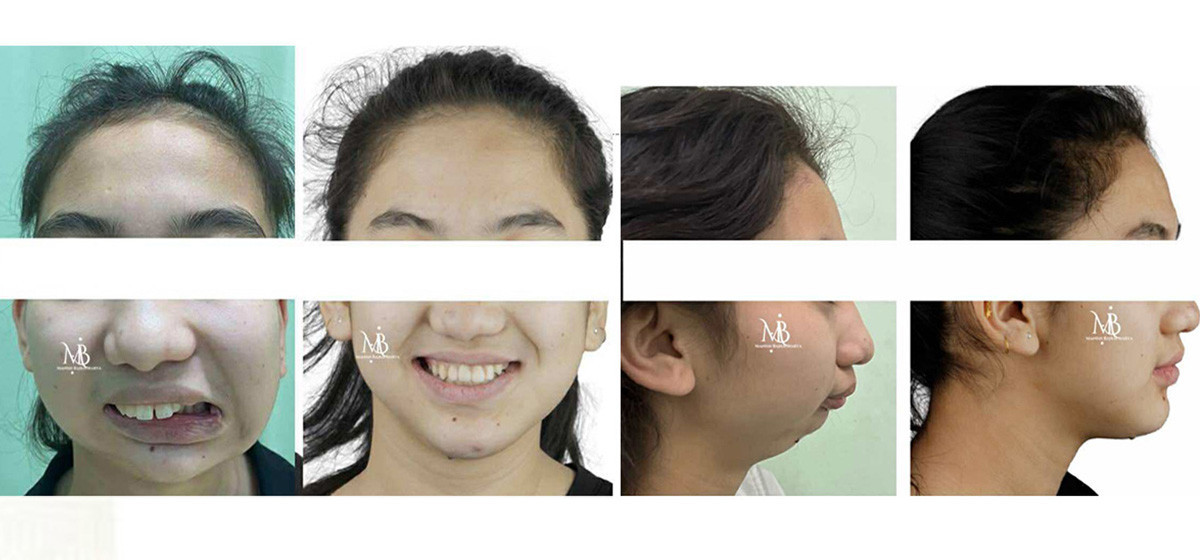KATHMANDU, July 28: In the span of five years, more than 150 people have undergone corrective surgeries for facial and jaw misalignments at the National Academy of Medical Sciences (NAMS), Bir Hospital.
According to the Dental Surgery Department, the number of such surgeries using modern techniques at Bir Hospital has reached 150. The ratio of men and women receiving these surgeries is equal.
Surgeries in this category are performed for conditions like misaligned teeth causing the jaw to protrude, sunken chin, facial asymmetry due to bone misalignment, or teeth growing abnormally outward. Deformities caused by birth defects or injuries that affect the structure of the face and jaw fall under facial and oral abnormalities.
According to the dental surgery unit, these surgeries have been conducted at Bir Hospital since 2019. While the hospital had initially started such surgeries in 2008 using traditional methods and with support from Indian doctors, the service could not continue back then.
Bir Hospital halts surgeries due to shortage of essential mater...

Doctors say that with the adoption of modern technologies, patient attraction has grown significantly. Instead of using braces to fix misaligned teeth, aligners—transparent plastic braces—are now used, followed immediately by surgery. In addition, the part of the face to be operated on is scanned using CT, 3D, and software tools to measure the area, allowing doctors to determine in advance how much bone needs to be cut. This reduces the chance of error and ensures accurate surgical outcomes.
Previously, in traditional methods, teeth were braced for up to a year before surgery, and bone was cut based on rough estimations during surgery. That approach led to higher risks of errors and complications. While it took up to two years to complete treatment with the traditional method, doctors now say the entire treatment can be completed within six months to a year through the fast-track surgery process.
According to the doctors, using 3D and software-guided surgeries minimizes the risk of cutting facial nerves or creating further asymmetry. “After our surgery, the face becomes properly aligned,” said Dr. Manish Bajracharya, an orthodontist at Bir Hospital.
During this five-year period, a team led by oral, maxillofacial and craniofacial surgeon Dr. Kishor Bhandari and orthodontist Dr. Bajracharya introduced the modern facial reconstruction technology at the hospital. Dr. Bhandari says they pursued this initiative with the goal of bringing a procedure popular in developed countries to Nepal.
After realizing the flaws in the traditional approach, both doctors went to Taiwan for fellowship training. Dr. Bajracharya completed a six-month fellowship program, while Dr. Bhandari completed a one-year course. Upon returning to Nepal, they started this service at Bir Hospital.
In the last five years, they have already served 150 patients. People from within Nepal as well as from abroad are coming to the hospital for surgery. “Patients have come from countries like Hong Kong and Canada,” said Dr. Bhandari.
Dr. Bajracharya shared that younger patients often arrive with various requests. From wanting a face like an actress they saw in a movie to coming in with relatively minor issues, the department has dealt with a wide range of cases.
Some patients even come asking for complete facial transformations, according to Dr. Bajracharya. “Some have requested a face like a Korean’s, but we didn’t proceed in such cases because even slight misalignment can lead to complaints,” he said. He also noted that some seek treatment within a short period.
Doctors say that, even with limited surgical tables, they have been able to carry out extended treatments over the five-year period. “Due to high demand from patients, we haven’t been able to reserve operating space as needed,” said Dr. Bhandari. Despite the one-year process that the treatment requires, they believe the number of surgeries conducted so far is a significant achievement.
Both doctors expressed satisfaction at being able to provide such complex procedures from a government hospital. They shared that seeing the joy on a patient’s face after successful surgery brings a deeply rewarding feeling. “More than financial benefit, we’re happy when the person whose face was transformed smiles,” said Dr. Bhandari.
“Some patients come back to thank us happily, some bring gifts. Those moments make us feel a great sense of achievement,” added Dr. Bajracharya. Providing this service from a government hospital has made it accessible even to patients from remote areas and modest backgrounds. “This service is not possible without teamwork. We will continue providing it from Bir in the coming years too,” the two doctors said.




































